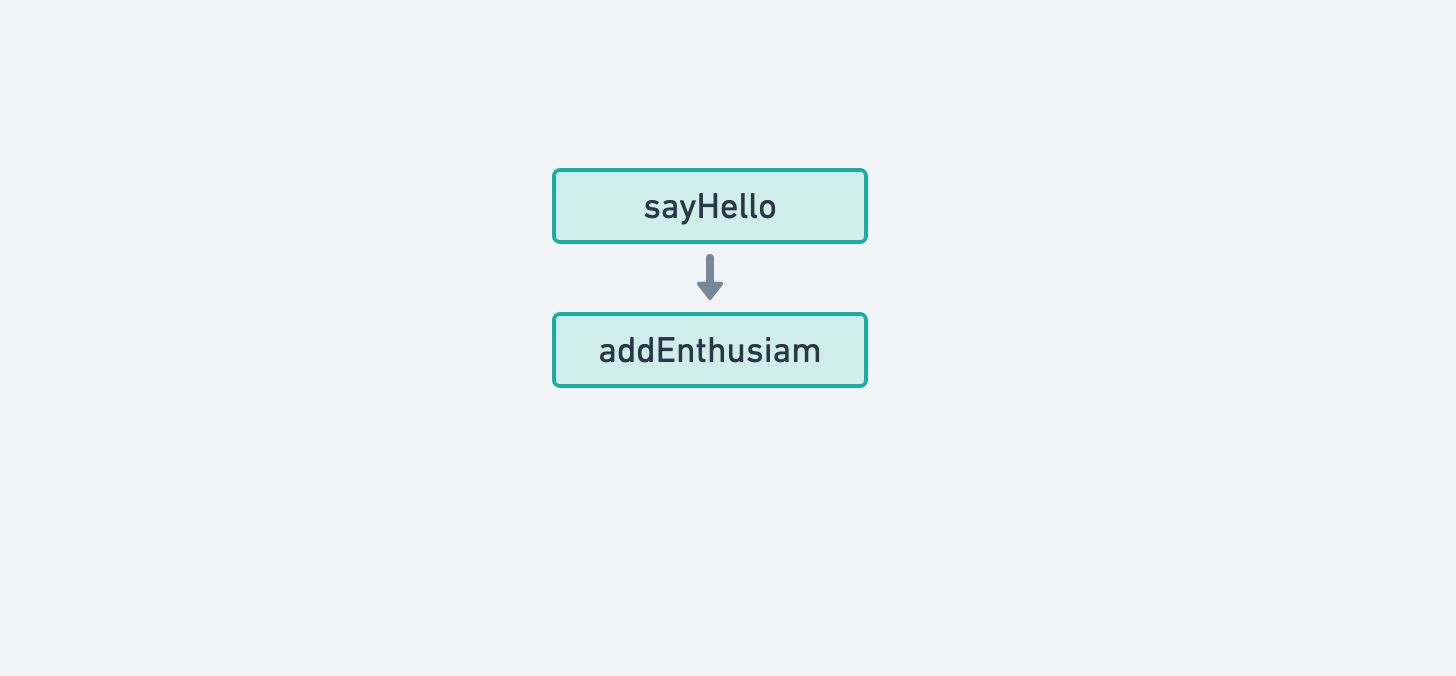Workflow
Sequential Tasks
For infinitic, a task is basically the method of a class. The implementation of this class is only needed in workers where the task is actually processed.
Within workflows, we should know only the interface of the class, used by the newService workflow function to create a stub. Syntactically, this stub can be used as an implementation of the task:
public class HelloWorkflowImpl extends Workflow implements HelloWorkflow {
// create a stub for the HelloService
private final HelloService helloService = newService(HelloService.class);
@Override
public String greet(String name) {
// synchronous call of HelloService::sayHello
String str = helloService.sayHello(name);
// synchronous call of HelloService::addEnthusiasm
String greeting = helloService.addEnthusiasm(str);
// inline task to display the result
inlineVoid(() -> System.out.println(greeting));
return greeting;
}
}
class HelloWorkflowImpl : Workflow(), HelloWorkflow {
// create a stub for the HelloService
private val helloService = newService(HelloService::class.java)
override fun greet(name: String): String {
// synchronous call of HelloService::sayHello
val str = helloService.sayHello(name)
// synchronous call of HelloService::addEnthusiasm
val greeting = helloService.addEnthusiasm(str)
// inline task to display the result
inline { println(greeting) }
return greeting
}
}
Functionally, the stub behave as follows:
- when the return value of the task is not known yet, this stub dispatches a message to Pulsar towards the workers asking for the task execution
- when the return value is known in the workflow history, the stub returns this value.
For example, let's consider this line (from the HelloWorkflowImpl workflow above).
String str = helloService.sayHello(name);
val str = helloService.sayHello(name)
Here helloService is a stub of the HelloService interface. When a workflow worker processes the workflow and reaches this line for the first time, it will dispatch a HelloService::sayHello task and stop its execution here.
After completion of this task, a workflow worker will process the workflow again, but with an updated workflow history. When reaching this line, the stub will - this time - provide the deserialized return value of the task, and the workflow will continue its execution.
And so on.
As we can guess now, the code below will guarantee that sayHello and addEnthusiasm tasks are processed sequentially, the second task using the return value of the first one.
String str = helloService.sayHello(name);
String greeting = helloService.addEnthusiasm(str);
val str = helloService.sayHello(name)
val greeting = helloService.addEnthusiasm(str)

